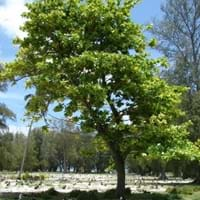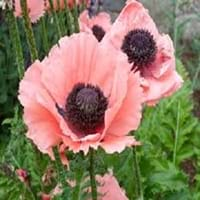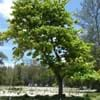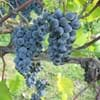Life Span
Perennial
Perennial
Type
Fruit, Perennial, Tree
Tender Perennial
Origin
Africa, Asia, Australia
Western Asia
Types
Not Available
Not Available
Habitat
Subtropical climates, Tropical areas
Lake margins, Lake Sides, Temperate Regions
USDA Hardiness Zone
Not Available
3-9
AHS Heat Zone
Not Available
9-1
Sunset Zone
Not Available
A1, A2, A3, 1a, 1b, 2a, 2b, 3a, 3b, 4, 5, 6, 7, 8, 9, 10, 11, 14, 15, 16, 17, 18, 19, 20, 21
Habit
Spreading
Upright/Erect
Flower Color
Non Flowering Plant
Light Pink
Flower Color Modifier
Not Available
Bicolor
Fruit Color
Dark Brown, Green
Not Available
Leaf Color in Spring
Dark Green
Green, Gray Green, Dark Green
Leaf Color in Summer
Green
Not Available
Leaf Color in Fall
Red
Green, Gray Green, Dark Green
Leaf Color in Winter
Red
Not Available
Leaf Shape
Broadly Ovate
Aristate
Plant Season
Summer
Spring, Summer
Sunlight
Full Sun, Partial Sun
Full Sun, Partial Sun
The pH of Soil
Acidic, Neutral
Acidic, Neutral, Alkaline
Soil Drainage
Well drained
Well drained
Bloom Time
Summer
Late Spring, Early Summer
Tolerances
Dry soil
Not Available
Where to Plant?
Container, Ground
Container, Ground, Pot
How to Plant?
Seedlings, Stem Planting
root cutting
Plant Maintenance
Low
Medium
Watering Requirements
Needs less watering
Keep the Soil well drained
In Summer
Ample Water
Lots of watering
In Spring
Moderate
Moderate
In Winter
Average Water
Average Water
Soil pH
Acidic, Neutral
Acidic, Neutral, Alkaline
Soil Drainage Capacity
Well drained
Well drained
Sun Exposure
Full Sun, Partial Sun
Full Sun, Partial Sun
Pruning
Remove dead branches, Remove dead leaves
Cut away fading foliage, Prune after flowering, Remove damaged leaves, Remove dead branches, Remove dead leaves
Fertilizers
All-Purpose Liquid Fertilizer
10-52-17 after germination, All-Purpose Liquid Fertilizer
Pests and Diseases
Not Available
Pests and diseases free, Red blotch
Plant Tolerance
Dry soil
Deer resistant, Drought
Flower Petal Number
Not Available
Single
Foliage Texture
Fine
Medium
Foliage Sheen
Glossy
Matte
Attracts
Birds
Not Available
Allergy
Asthma
Skin irritation
Aesthetic Uses
Showy Purposes
along a porch, deck or patio, Beautification, Borders, Cottage Garden, Mixed Border, small hedge
Beauty Benefits
Making cosmetics
Not Available
Edible Uses
Yes
Not Available
Environmental Uses
Air purification, Food for birds
Air purification, Deer resistant
Medicinal Uses
Energy, Minerals, ß-carotene, Vitamin A, Vitamin C, Vitamin E
Not Available
Part of Plant Used
Fruits
Flowers, Whole plant
Other Uses
Grown for shade, Used As Food
Beneficial species for attracting pollinators, Showy Purposes
Used As Indoor Plant
No
No
Used As Outdoor Plant
Yes
Yes
Garden Design
Edible, Fruit Tree
Feature Plant, Mixed Border
Botanical Name
Terminalia catappa
PAPAVER orientale 'Carneum'
Common Name
Bengal almond, country almond, false kamani, Indian almond, Malabar almond, sea almond, tropical almond
Oriental Poppy, Pink Oriental Poppy
In Hindi
जंगली बादाम
ओरिएंटल पोस्ता
In German
Katappenbaum, Seemandelbaum, Indische Mandel
Türkischer Mohn
In French
Badamier
pavot oriental
In Spanish
almendro malabar, almendro de los trópicos, almendrón, falso kamani, Egombegombe
amapola oriental
In Greek
Ινδικό αμύγδαλο
oriental poppy
In Portuguese
amêndoa, amendoeira, castanheira, anoz, árvore-de-anoz, castanholeira, coração-de-nego, castanhola, sete-copas, chapéu-de-sol, guarda-sol, terminália, figueira-da-índia
papoila oriental
In Polish
Migdałecznik właściwy
orientalne maku
In Latin
inti almont
oriental poppy
Phylum
Magnoliophyta
Angiosperms
Class
Magnoliopsida
Magnoliopsida
Order
Myrtales
Ranunculales
Family
Combretaceae
Papaveraceae
Clade
Angiosperms, Eudicots, Rosids
Eudicots
Tribe
Not Available
Not Available
Subfamily
Not Available
Magnolioideae
Importance of Indian Almond and Pink Oriental Poppy
Want to have the most appropriate plant for your garden? You might want to know the importance of Indian Almond and Pink Oriental Poppy. Basically, these two plants vary in many aspects. Compare Indian Almond and Pink Oriental Poppy as they differ in many characteristics such as their life, care, benefits, facts, etc. Every gardener must at least have the slightest clue about the plants he wants to plant in his garden. Compare their benefits, which differ in many ways like facts and uses. The medicinal use of Indian Almond is Energy, Minerals, ß-carotene, Vitamin A, Vitamin C and Vitamin E whereas of Pink Oriental Poppy is Not Available. Indian Almond has beauty benefits as follows: Making cosmetics while Pink Oriental Poppy has beauty benefits as follows: Making cosmetics.
Compare Facts of Indian Almond vs Pink Oriental Poppy
How to choose the best garden plant for your garden depending upon its facts? Here garden plant comparison will help you to solve this query. Compare the facts of Indian Almond vs Pink Oriental Poppy and know which one to choose. As garden plants have benefits and other uses, allergy is also a major drawback of plants for some people. Allergic reactions of Indian Almond are Asthma whereas of Pink Oriental Poppy have Skin irritation respectively. Having a fruit bearing plant in your garden can be a plus point of your garden. Indian Almond has no showy fruits and Pink Oriental Poppy has no showy fruits. Also Indian Almond is not flowering and Pink Oriental Poppy is not flowering . You can compare Indian Almond and Pink Oriental Poppy facts and facts of other plants too.





